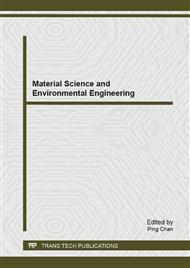p.444
p.450
p.456
p.462
p.465
p.472
p.476
p.479
p.487
Analysis of Sound Absorption Properties of Three-Leaf Microperforated Panel Absorbers without a Rigid Backing
Abstract:
Microperforated panel (MPP) absorbers have been developed rapidly and used in many fields in recent years. First, based on the Maa’s theory, the theoretical development of MPP is reviewed in this paper. Furthermore, structure design and processing technology of MPP are introduced. Finally, the further development of MPP is discussed. Based on the MPP theory and electro-acoustical equivalent circuit principle, sound absorption properties of three-leaf microperforated panel (TMPP) absorbers without a rigid backing are studied to broaden the sound absorption bandwidth of MPP structure. Simulation results show that TMPP absorbers without a rigid backing have two resonance peaks and the energy dissipated coefficient remains constant in the low frequency range. The resonance frequency moves toward low frequency region with the increasing of the distance, thickness and pore diameter of MPP and moves toward high frequency region with the increasing of the perforation when other parameters keep invariant. The energy dissipated coefficient more than 0.5 over 8 octaves by choosing proper parameters. In conclusion, TMPP absorbers without a rigid backing have good sound absorption properties in a wide frequency range.
Info:
Periodical:
Pages:
465-471
Citation:
Online since:
May 2014
Authors:
Price:
Сopyright:
© 2014 Trans Tech Publications Ltd. All Rights Reserved
Share:
Citation:


